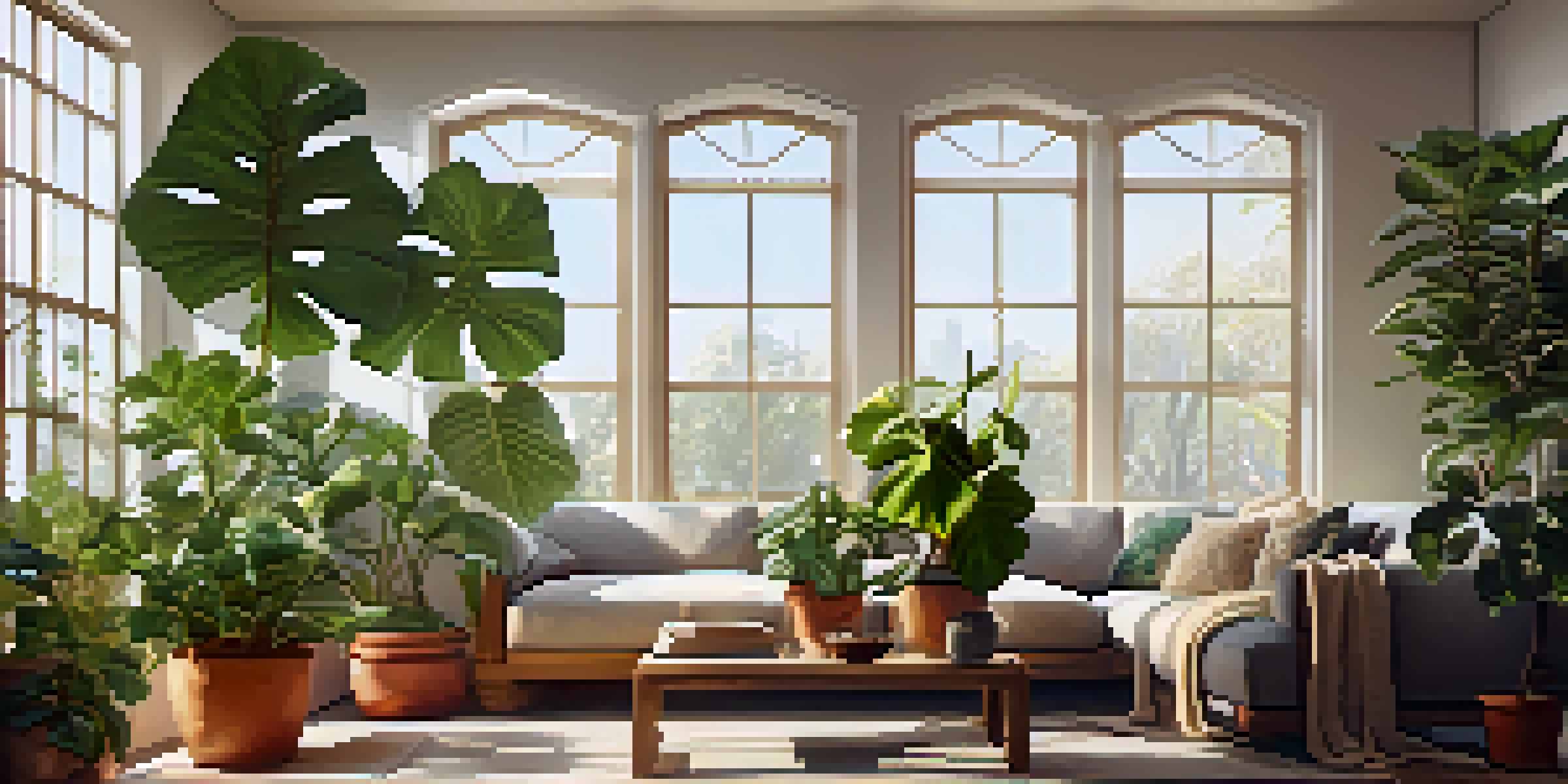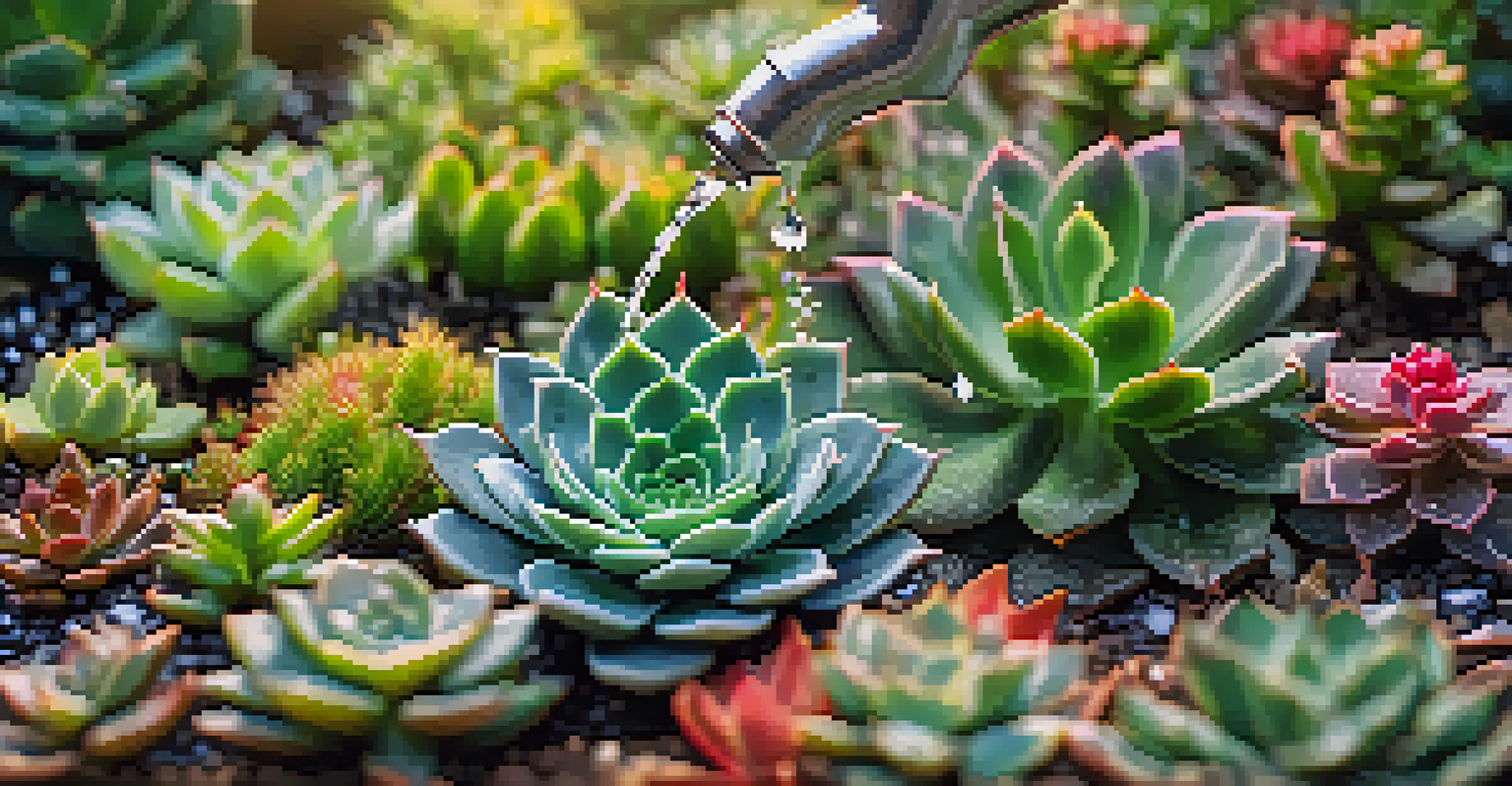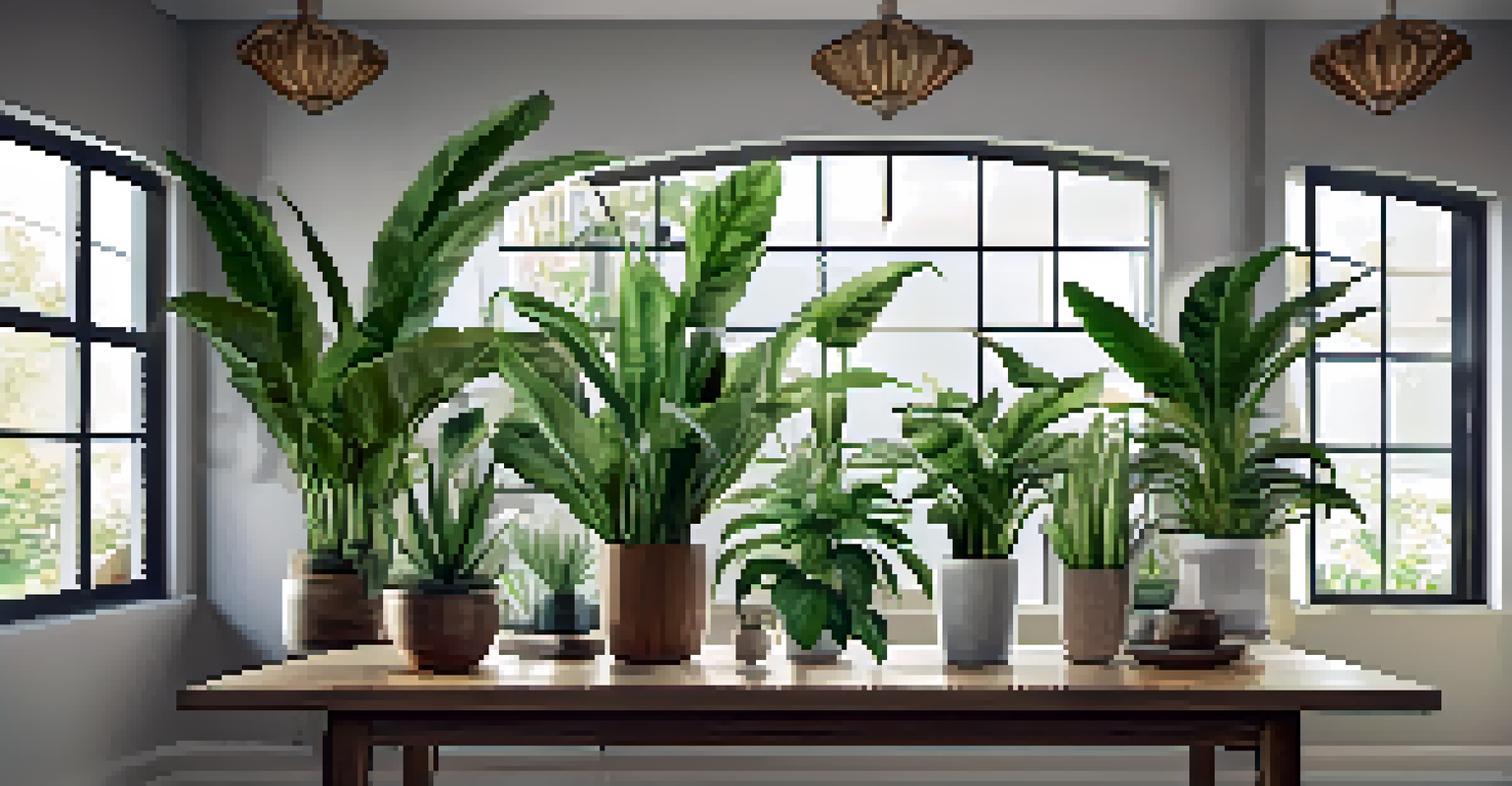Creating an Indoor Plant Sanctuary: Steps for Success

Understanding the Benefits of Indoor Plants
Indoor plants do more than just beautify your space; they offer a range of benefits. For instance, they improve air quality by filtering out toxins and producing oxygen, creating a healthier environment for you and your family. Additionally, studies have shown that having plants around can boost your mood and reduce stress, making your home feel more inviting and serene.
Plants give us oxygen for the lungs and for the soul.
Imagine coming home after a long day to a space filled with vibrant greenery. Just the sight of lush plants can elevate your spirits and help you unwind. Not to mention, plants can also enhance your decor, adding a touch of nature that complements your personal style.
So, whether you're looking to purify the air, lift your mood, or simply add some aesthetic appeal, understanding the benefits of indoor plants is the first step toward creating your own sanctuary.
Choosing the Right Plants for Your Space
Selecting the right plants for your indoor sanctuary is crucial. Consider factors such as light availability, humidity levels, and your personal care preferences. For instance, if you have low light, opting for snake plants or pothos can be a smart choice, as they thrive even in shade.

Every plant has its own personality, just like people, and finding the right fit for your space can be a fun exploration. You might prefer the striking look of a fiddle leaf fig or the delicate beauty of peace lilies. Each plant brings its own charm and character, so choose ones that resonate with you.
Indoor Plants Improve Well-Being
Indoor plants enhance air quality and boost mood, creating a healthier and more inviting living space.
Additionally, consider your lifestyle. If you're busy and often forget to water, succulents or cacti are low-maintenance options. By matching plants to your lifestyle, you can enjoy your indoor sanctuary without feeling overwhelmed.
Creating the Perfect Environment for Your Plants
Once you've chosen your plants, it's time to create the ideal environment for them to thrive. Start by evaluating the light conditions in your home and placing plants accordingly. Some plants prefer bright, indirect sunlight, while others thrive in shade, so understanding what each plant needs is essential.
A house is not a home without a plant.
Temperature and humidity also play a significant role in plant health. Most indoor plants prefer temperatures between 65°F and 75°F. If your home is particularly dry, consider using a humidifier or placing a tray of water near your plants to maintain optimal humidity levels.
Lastly, ensure you have the right pots and soil. Well-draining pots prevent waterlogging, while quality potting soil provides necessary nutrients. By setting up the right environment, you're giving your plants the best chance to flourish.
Watering Wisely: The Key to Plant Health
Watering is perhaps the most critical aspect of plant care, and it's essential to get it right. Overwatering can lead to root rot, while underwatering can cause plants to wilt. A good rule of thumb is to check the top inch of soil; if it's dry, it's time to water.
Different plants have varying water needs, so familiarize yourself with your specific plants' requirements. For example, while ferns like to be consistently moist, succulents prefer to dry out between waterings. Paying attention to these details can help you avoid common pitfalls.
Choosing the Right Plants Matters
Selecting plants based on light, humidity, and your lifestyle ensures a thriving indoor garden.
Furthermore, consider the time of day you water your plants. Early morning is often best, as it allows plants to absorb moisture before the heat of the day. By watering wisely, you can ensure your indoor sanctuary remains vibrant and healthy.
Fertilizing: Nourishing Your Indoor Garden
To keep your plants thriving, regular fertilization is essential. Plants need nutrients to grow strong and healthy, and fertilizer provides the added boost they require. A balanced, water-soluble fertilizer is a great choice for most indoor plants, providing the right mix of nitrogen, phosphorus, and potassium.
The growing season, typically spring and summer, is when plants are most active, making it the ideal time to fertilize. During these months, feeding your plants every four to six weeks can make a noticeable difference in their growth and vitality.
However, remember that less can be more. Over-fertilizing can lead to salt buildup in the soil, which can harm your plants. Always follow the instructions on the fertilizer package and adjust based on your plants' responses.
Pest Control: Protecting Your Plant Sanctuary
Even in an indoor sanctuary, pests can sometimes make an unwelcome appearance. Common indoor pests like spider mites, aphids, and mealybugs can wreak havoc on your plants if left unchecked. Regularly inspecting your plants can help you catch infestations early and take action.
There are various natural remedies to combat pests, such as neem oil or a simple soap solution. Spraying these solutions on affected areas can help eliminate pests without harming your plants. Plus, integrating beneficial insects like ladybugs can also keep pest populations in check.
Proper Care Keeps Plants Thriving
Watering wisely, fertilizing appropriately, and managing pests are key to maintaining a vibrant indoor plant sanctuary.
Creating a healthy environment, with proper watering and light, can also prevent pest infestations. A strong and well-cared-for plant is less likely to succumb to pests, so focus on nurturing your indoor sanctuary to keep it thriving.
Designing Your Indoor Plant Layout
Designing your indoor plant layout is where your creativity can shine. Consider grouping plants with similar light and water needs together to create a cohesive look. You can mix and match different heights and textures to add visual interest, making your sanctuary feel lush and inviting.
Don’t hesitate to use various containers to enhance your design. Unique pots can serve as decorative elements, adding character to your space. For instance, a colorful ceramic pot can brighten a corner, while a sleek, modern planter can elevate a minimalist design.

Finally, remember to leave some space for movement. While a densely planted area can look stunning, allowing room for airflow and maintenance can keep your plants healthy and make caring for them easier.